Sean Bienvenidos, Japonistasarqueológicos, A Una Nueva Entrega De Arqueología Nipona, Una Vez Dicho
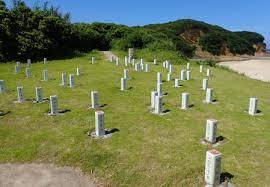



Sean bienvenidos, japonistasarqueológicos, a una nueva entrega de arqueología nipona, una vez dicho esto pónganse cómodos qué empezamos. - En esta ocasión vamos a hablar, de cómo se deformaba el cráneo de forma antropogénica en el sitio arqueológico de Hirota en Tanegashima, localizado en la prefectura de Kagoshima. El yacimiento data del periodo yayoi 400 al 250 d.c - La deformación craneal ya se daba en muchas culturas de América, con motivos religiosos y sociales y posiblemente aquí podremos hallar el mismo caso similar o parecido, al ser un hallazgo reciente todavía faltan muchos estudios para ello. ¿Qué opinan ustedes al respecto? ¿Conocían este lugar? - En el caso de las culturas Americanas, le ponían cuerdas para alargar el cráneo¿Practicaban las mismas actividades? Quien sabe lo que nos depara el futuro, esta publicación está hecha con intenciones científica-divulgativa para transmitir conocimiento al mundo. - Espero que os guste y nos vemos en próximas publicaciones, que pasen una buena semana.
-
Welcome, Japanese archaeologists, to a new installment of Japanese archaeology, having said that, make yourself comfortable and let's start.
-
On this occasion we are going to talk about how the skull was deformed in an anthropogenic way in the archaeological site of Hirota in Tanegashima, located in the Kagoshima prefecture. The site dates from the Yayoi period 400 to 250 AD
-
Cranial deformation already occurred in many cultures in America, for religious and social reasons and possibly here we can find the same or similar case, as it is a recent finding, many studies are still missing for it. What do you think about it? Did you know this place? - In the case of American cultures, they used ropes to lengthen the skull. Did they practice the same activities? Who knows what the future holds for us, this publication is made with scientific-informative intentions to transmit knowledge to the world. - I hope you like it and see you in future publications, have a good week.Welcome, Japanese archaeologists, to a new installment of Japanese archaeology, having said that, make yourself comfortable and let's start.
-
On this occasion we are going to talk about how the skull was deformed in an anthropogenic way in the archaeological site of Hirota in Tanegashima, located in the Kagoshima prefecture. The site dates from the Yayoi period 400 to 250 AD
-
Cranial deformation already occurred in many cultures in America, for religious and social reasons and possibly here we can find the same or similar case, as it is a recent finding, many studies are still missing for it. What do you think about it? Did you know this place?
-
In the case of American cultures, they used ropes to lengthen the skull. Did they practice the same activities? Who knows what the future holds for us, this publication is made with scientific-informative intentions to transmit knowledge to the world. - I hope you like it and see you in future publications, have a good week.
-
日本の考古学者の皆さん、日本の考古学の新しい記事へようこそ。そうは言っても、気を楽にして始めましょう。
-
今回は、鹿児島県種子島の広田遺跡で、人為的に頭蓋骨がどのように変形されたのかについてお話します。この遺跡は、弥生時代、西暦 400 年から 250 年に遡ります。 頭蓋骨の変形は、宗教的および社会的理由により、アメリカの多くの文化ですでに発生しており、おそらくここでも同じまたは類似の症例が見つかる可能性があります。これは最近の発見であるため、多くの研究がまだ不足しています。あなたはそれについてどう思いますか?この場所を知っていましたか? - アメリカ文化の場合、頭蓋骨を伸ばすためにロープを使用していましたが、同じ活動を行っていたのでしょうか?私たちの将来がどうなるかは誰にもわかりませんが、この出版物は、知識を世界に伝えるという科学的有益な意図を持って作成されています。
-
気に入っていただければ幸いです。今後の出版物でお会いできることを願っています。良い一週間をお過ごしください
More Posts from Noticiasarquelogicasjaponesas and Others


Apart from this publication I have some more if you want to take a look, I hope you like it I put a lot of love and love anything or any topic you want to talk about in the blog as long as it is focused on it write me to this publication or through the blog. I hope you like it and I'll see you in future posts here on Tumblr, as usual.
-
Aparte de esa publicación tengo algunas más por si queréis echarle un vistazo, además espero que os guste le pongo mucho cariño y mucho amor cualquier cosa o cualquier tema que quieran que hable en el blog siempre y cuando esté enfocado a ello me escriben a esta publicación o a través del blog. Espero que os guste y nos vemos en próximas publicaciones aquí en Tumblr, con la normalidad de siempre.
-
その出版物とは別に、あなたがご覧になりたい場合に備えて、さらにいくつかの記事を用意しています。また、気に入っていただければ幸いです。私は、あなたがブログで話してほしいあらゆる内容やトピックに、たくさんの愛情と愛情を注いでいます。それに焦点を当てている限り、この出版物またはブログを通じて私に連絡してください。 気に入っていただければ幸いです。いつものように、今後の Tumblr の投稿でお会いしましょう。






A marvel of prehistoric engineering, this sculptural group dates from around the 6th century AD and is a living archaeological relic of the emperor and Japanese glory. - 先史時代の技術の驚異であるこの彫刻群は、紀元6世紀ごろのもので、天皇と日本の栄光を伝える生きた考古学的遺物である。 - Todo una maravilla de la ingeniería prehistórica, este grupo escultórico data del siglo VI d.C aproximadamente, son todo una reliquia arqueológica viva el emperador y la gloria nipona.






sean bienvenidos japonistasarqueológicos, en este video que he encontrado en youtube, podemos ver el Kyudo ( きゅうどう) un tipo de arte marcial que se originó en Japón en el siglo XII, cuando Minamoto no Yoritomo estableció el shogunato de Kamakura, se estableció la moral samurái de alcanzar alturas espirituales a través del entrenamiento en tiro con arco y caballos. - Espero que os haya gustado y nos vemos en próximas publicaciones de Japón ¿ Lo conocían? - 考古学的な日本のファンを歓迎します。私が YouTube で見つけたこのビデオでは、源頼朝が鎌倉幕府を確立した 12 世紀に日本で生まれた武道の一種である弓道 (きゅうどう) を見ることができます。アーチェリーと馬のトレーニングを通じて精神的な高みに到達します。 - 気に入っていただけて、今後の日本の出版物でお会いできることを願っています。 - Welcome archeological Japanese fans, in this video that I found on YouTube, we can see Kyudo (きゅうどう) a type of martial art that originated in Japan in the 12th century, when Minamoto no Yoritomo established the Kamakura shogunate, morality was established samurai to reach spiritual heights through training in archery and horses. - I hope you liked it and see you in future Japan publications. Did you know him?





Sean bienvenidos japonistasarqueológicos, a una nueva entrega de arqueología japonesa, una vez dicho esto pónganse cómodos que empezamos. - Sí, hablamos de la armadura japonesa, se nos viene a la cabeza, la más característica, la de los samurais. ¿Hay alguna armadura más antigua? Sí, datan del periodo kofun o protohistorico, se sabe que en periodos anteriores las tenían de madera por los pocos restos que se han conservado al yayoi, ya que el Jomon fue un periodo de paz y no hay indicios de violencia. - La imagen de estas armaduras la tenemos en las famosas figuras, haniwa hechas de arcilla y utilizadas para los enterramientos, aunque todavía siguen siendo un misterio, estas armaduras estaban manufacturadas de hierro. - Espero que os haya gustado y nos vemos en próximas publicaciones, que pasen una buena semana. - 日本の考古学者たちよ、ようこそ。そう言われたら、くつろいで、さっそく始めましょう。 - そうですね、日本の鎧について話しているのですが、一番特徴的なのは侍の鎧ですね。 - この鎧のイメージは、土で作られ、埋葬に使われた有名な埴輪に見ることができますが、まだ謎が多いのですが、この鎧は鉄で作られていたのですね。 - 気に入っていただけたでしょうか、また今後の記事でお会いしましょう、良い一週間をお過ごしください。 - Welcome, Japanese archaeologists, to a new installment of Japanese archaeology, and once that's been said, make yourselves comfortable and let's get started. - Yes, we are talking about Japanese armour, the most characteristic one comes to mind is that of the samurai, are there any older armour? yes, they date from the Kofun or proto-historic period, we know that in earlier periods they were made of wood because of the few remains that have been preserved in the yayoi, since the Jomon was a period of peace and there is no evidence of violence. - The image of this armour can be seen in the famous haniwa figures, made of clay and used for burials, although they are still a mystery, these armours were made of iron. - I hope you liked it and see you in future posts, have a nice week.


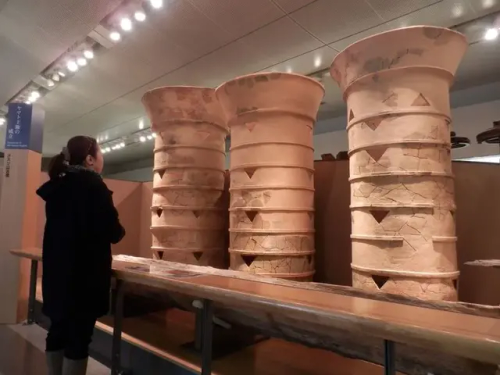

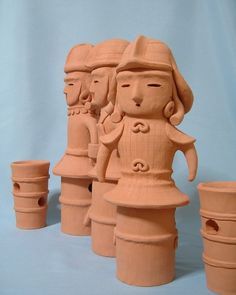
Sean bienvenidos japonistasarqueologicos a una nueva entrega de Arqueología Japonesa en esta ocasión nos trasladamos a la prehistoria japonesa dicho esto pónganse cómodos que empezamos. - Tengo el placer de presentaros a las esculturas Haniwa, ¿Qué significa este término?¿Cuándo surgió? Y ¿Cuál era su funciones? - Las primeras preguntas para este capítulo serán: ¿Cuándo surgió? Datan de los siglos VI y VII d.C Como ya comenté en varias ocasiones la cronología japonesa es difícil de entender para ojos occidentales ya que hay que verla con ojos orientales. - La segunda pregunta será ¿En donde podemos encontrar estas obras de arte?: La Podemos encontrar en multitud de lugares pero vengo a destacar uno en especial se trata de uno de los mejores juegos de Nintendo y su nombre es Atsumare Dōbutsu no Mori. - Espero que os haya gustado el capítulo 1 y nos vemos en los próximos capítulos de esta serie de historia y arqueología un cordial saludo.
-
日本考古学へようこそ。新しい日本考古学へ。今回は日本の先史時代に移ります。そうは言っても、気を楽にして始めましょう。
-
埴輪彫刻についてご紹介させていただきます。この言葉はいつ頃から生まれたのでしょうか?そしてその機能は何だったのでしょうか? - この章の最初の質問は次のとおりです。それはいつ出現しましたか?それらは西暦 6 世紀から 7 世紀のものです。 すでに何度か述べましたが、日本の年表は東洋の目で見なければならないため、西洋の目には理解しにくいものです。
-
2 番目の質問は次のとおりです。これらの芸術作品はどこで見つけることができますか?: さまざまな場所で見つけることができますが、特に 1 つを取り上げます。これは任天堂の最高のゲームの 1 つであり、その名前は「あつまれ どうぶつの森」です。
-
第 1 章を気に入っていただければ幸いです。この歴史と考古学シリーズの次の章でもお会いしましょう。
-
Welcome japonistasarqueologicos to a new installment of Japanese Archaeology. This time we move to Japanese prehistory. Having said that, make yourselves comfortable as we begin.
-
I have the pleasure of introducing you to the Haniwa sculptures. What does this term mean? When did it emerge? And what were its functions?
-
The first questions for this chapter will be: When did it emerge? They date back to the 6th and 7th centuries AD. As I have already mentioned on several occasions, Japanese chronology is difficult to understand for Western eyes since it must be seen with Eastern eyes.
-
The second question will be: Where can we find these works of art? We can find them in many places, but I am here to highlight one in particular. It is one of the best Nintendo games and its name is Atsumare Dōbutsu no Mori.
-
I hope you liked chapter 1 and I will see you in the next chapters of this series of history and archaeology. Best regards.


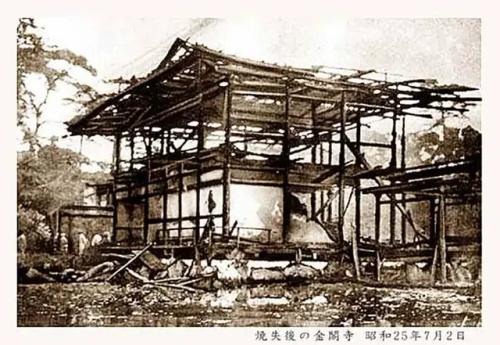
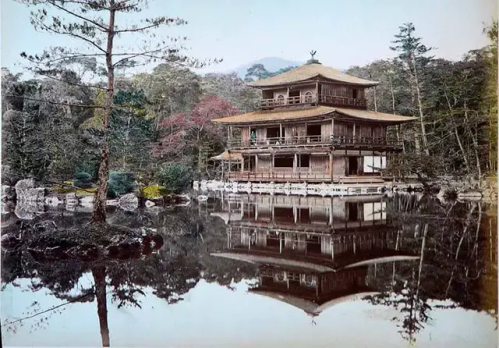



Sean bienvenidos, japonistasarqueologos, a una nueva entrega, cultural-artística vamos a hablar sobre Kinkaku-ji una vez dicho esto pónganse cómodos que empezamos. - El kinkaku-ji se localiza en la ciudad de Kyoto, en la prefectura de Kanto. Kyoto fue una de las dos grandes capitales del Japón feudal porque su otra ciudad de gran peso fue Nara, pero eso es otra historia. - El Kinkaku-ji, fue construido en el siglo XIV, el que se ve actualmente es una reconstrucción porque el original se destruyó en un incendio en 1950 y el actual data de 1980 aproximadamente ya en 1880 perdió su revestimiento de pan de oro, fue La residencia de Ashikaga yoshimitsu tras su muerte lo donó a la orden religiosa y pasó a ser un templo budista. - Espero que os guste y nos vemos en próximas publicaciones. Fuentes de foto: https://blogukiyoe.es/kinkaku-ji-en-el-ukiyo-e wikipedia - Welcome, Japanese archaeologists, to a new cultural-artistic installment, we are going to talk about Kinkaku-ji. Once that has been said, make yourself comfortable and we will begin. - Kinkaku-ji is located in the city of Kyoto, Kanto prefecture. Kyoto was one of the two great capitals of feudal Japan because its other major city was Nara, but that is another story. - The Kinkaku-ji was built in the 14th century, the one currently seen is a reconstruction because the original was destroyed in a fire in 1950 and the current one dates from approximately 1980 and in 1880 it lost its gold leaf coating, it was La residence of Ashikaga Yoshimitsu after his death he donated it to the religious order and it became a Buddhist temple. - I hope you like it and see you in future posts. Photo sources: https://blogukiyoe.es/kinkaku-ji-en-el-ukiyo-e Wikipedia - 日本の考古学者の皆さん、新しい文化芸術の回へようこそ。金閣寺についてお話します。それが終わったら、落ち着いてから始めましょう。 - 金閣寺は、関東県京都市にあります。京都は、もう一つの主要都市が奈良であったため、封建時代の日本の二大首都の一つでしたが、それはまた別の話です。 - 金閣寺は 14 世紀に建てられ、現在見られるものは再建されたものです。オリジナルは 1950 年の火災で焼失し、現在のものは 1980 年頃のもので、1880 年に金箔のコーティングが失われ、ラ邸でした。足利義満の死後、教団に寄進され仏教寺院となった。 - 気に入っていただければ幸いです。今後の投稿でお会いしましょう。 - 写真出典: https://blogukiyoe.es/kinkaku-ji-en-el-ukiyo-e ウィキペディア

Una espada con alma propia./自らの魂を宿した剣。/A sword with its own soul. La katana o (sable japonés) japonesa es un elemento, único en el mundo, porque para los samuráis la espada era su alma y perderla era todo un deshonor. La katana japonesa surge el siglo VIII, periodo Heian, pero en el periodo entre el 1192 y el 1336, durante el periodo Kamakura, la producción de espadas se amplió bastante. - 日本刀は世界でも類を見ない要素です。サムライにとって刀は魂であり、それを失うことは完全な不名誉だからです。 日本刀は平安時代の8世紀に誕生しましたが、鎌倉時代の1192年から1336年にかけて刀剣の生産は大幅に拡大しました。 - The Japanese katana or (Japanese sword) is an element, unique in the world, because for the samurai the sword was their soul and losing it was a complete dishonor. The Japanese katana emerged in the 8th century, Heian period, but in the period between 1192 and 1336, during the Kamakura period, the production of swords expanded considerably.


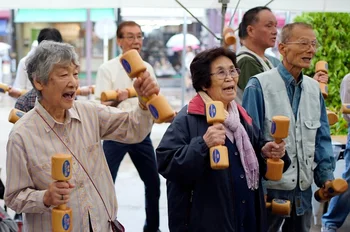
Sean bienvenidos japonistasarqueologicos a una nueva actualidad del país del sol naciente, en esta ocasión en el tema de actualidad de esta opción será la natalidad y de cómo afectará al país dicho esto pónganse cómodos que empezamos. - La esperanza de vida en Japón es la más alta del mundo, llegando a los 100 años, lo cual lo convierte en el país más longevo del mundo, Japón para 2046, según nuevos estudios llevados a cabo por National Geographic, será de 37.5% de población envejecida. - La tasa de natalidad y los estudios realizados por Statista Research Department en septiembre 29, 2022 natalidades son de 1,69. Seguramente llegue a un punto en el que se llegará a un equilibrio entre la tasa de natalidad y la tasa de mortalidad. - ¿Cuál será el destino de Japón? ¿Qué opinan al respecto? Espero que os haya gustado y nos vemos en próximas publicaciones que pasen una buena semana. - 今回は「出生率」と「出生率の推移」についてです。 - 日本の平均寿命は、それが世界で最も長く生きている国になり、100年に達し、世界で最も高いです、日本は2046年までに、ナショナルジオグラフィックが実施した新しい研究によると、人口の37.5%が高齢化されることになります。 - 2022年9月29日にStatista Research Departmentが行った研究によると、出生率・出生数は1.69である。おそらく、出生率と死亡率が均衡する地点に達するだろう。 - 日本の運命はどうなるのか、あなたはどう思いますか?私はあなたがそれを好きで、将来の記事であなたを参照してください願っています良い週を持っています。 - Welcome japanistasarqueologicos to a new news from the country of the rising sun, this time the topic of this option will be the birth rate and how it will affect the country, that said, make yourselves comfortable and let's start. - Life expectancy in Japan is the highest in the world, reaching 100 years, which makes it the longest living country in the world, Japan by 2046, according to new studies conducted by National Geographic, will be 37.5% of the population aged. - The birth rate and birth rates are 1.69, according to studies conducted by Statista Research Department on September 29, 2022. It will probably reach a point where a balance will be reached between the birth rate and the death rate. - What will Japan's fate be, and what do you think about it? I hope you liked it and see you in future posts have a good week.


Sean bienvenidos, japonistasarqueológicos a una nueva entrega, de arqueología en la que comentaremos, cómo era vivir hace 2000 años en el período Yayoi, una vez dicho esto pónganse cómodos que empezamos. — En el emplazamiento, podréis vivir la experiencia de como si estuvierais en las viviendas, de dicho periodo, las recreaciones de los almacenes y los santuarios de las ruinas de toro se han reducido a una escala de aproximada al 80 % las paredes representan la naturaleza, de la época y de su estilo de vida. Siéntete como si hubieras viajado en el tiempo al pueblo Toro del período Yayoi, con nuestra máquina del tiempo, ya que puede ser una experiencia inolvidable, para todas las edades, porque la vida no ha cambiado en 2000 a 3000 años. — Espero que os guste y nos vemos en próximas publicaciones, que pasen una buena semana.
-
日本の考古学者諸君、ようこそ考古学の新連載へ。2000年前の弥生時代の暮らしとはどんなものだったのかについて語り合おう。 - 遺跡では、当時の住居がどのようなものであったかを体験することができます。トロ遺跡の倉庫や神社を約80%の縮尺で再現し、壁で当時の自然や生活様式を表現しています。まるでタイムマシンで弥生時代の登呂集落にタイムスリップしたかのような体験は、2000年から3000年経っても変わらない暮らしの中で、世代を問わず忘れられない思い出になることだろう。 - それでは、また次回もお楽しみに。
-
Welcome, Japanese archaeologists, to a new instalment of archaeology in which we will discuss what it was like to live 2000 years ago in the Yayoi period, so make yourselves comfortable and let's get started. - At the site, you can experience what it was like to live in the dwellings of that period, the recreations of the warehouses and shrines of the toro ruins have been reduced to a scale of about 80% and the walls represent the nature of the period and its lifestyle. Feel as if you have travelled back in time to the Toro village of the Yayoi period, with our time machine, as it can be an unforgettable experience, for all ages, because life has not changed in 2000 to 3000 years. - I hope you like it and see you in future publications, have a nice week.
詳しくは/more information:
https://www.shizuoka-toromuseum.jp/guide/admission/


Capítulo 1: Introducción a las pirámides niponas.
Sean bienvenidos japonítasarqueológicos a una nueva serie en la cual iremos resolviendo los misterios de las pirámides Japonesas sus usos entre otras cosas. Esta serie también la haré en Spotify una vez dicho esto pónganse cómodos que comenzamos. - ¿Qué entendemos por pirámides? ¿Pueden tener otros significados? ¿Las pirámides que Podemos observar en otras culturas pidieron tener un modelo a seguir? Todas estas preguntas y más las iremos resolviendo en los próximos capítulos. - ¿Qué entendemos por pirámides? Pueden ser una formación natural con su forma o también una construcción que tiene una forma piramidal, la puede ver de muchísimas formas piramidales. ¿Pueden tener otros significados?: La respuesta es sí, ya se sabe que desde la prehistoria los antiguos homínidos adoraban montañas, ríos etc. - ¿Las pirámides que Podemos observar en otras culturas pidieron tener un modelo a seguir?: La respuesta es sí, ya que en la prehistoria, las adoraban como lugares sagrados constituyendo altares, haciendo pequeños agujeros en la misma para dejar sus ofrendas y posibles sacrificios además posiblemente readaptan su forma para sus necesidades. - Espero que os haya gustado y nos vemos en las próximas publicaciones de historia y arqueología de Japón.
-
第 1 章: 日本のピラミッドの紹介。 日本の考古学者を新しいシリーズにようこそ。このシリーズでは、日本のピラミッドの謎やその用途などを解明します。このシリーズも Spotify でやります。 - ピラミッドとはどういう意味ですか?彼らは他の意味を持つことができますか?他の文化で観察できるピラミッドは、従うべきモデルを持つことを求めましたか?これらすべての質問とそれ以上は、次の章で解決されます。 - ピラミッドとはどういう意味ですか?それらは、その形状を備えた自然な形成でも、ピラミッド型の構造でもあります。 非常に多くのピラミッド形状で見ることができます。 彼らは他の意味を持つことができますか?: 答えはイエスです。先史時代から、古代の人類が山や川などを崇拝していたことはすでに知られています。 - 私たちが他の文化で観察できるピラミッドは、従うべきモデルを持つことを求めましたか?: 答えはイエスです。なぜなら、先史時代、彼らはそれらを神聖な場所として崇拝し、祭壇を構成し、捧げ物や可能な犠牲を残すためにそこに小さな穴を開けたからです。また、必要に応じて形状を変更することもできます。 - 日本の歴史と考古学の次の出版物でお会いしましょう。
-
Chapter 1: Introduction to the Japanese pyramids. Welcome Japanese archaeologists to a new series in which we will be solving the mysteries of the Japanese pyramids, their uses, among other things. I will also do this series on Spotify, having said that, make yourself comfortable, let's start. - What do we mean by pyramids? Can they have other meanings? Did the pyramids that we can observe in other cultures ask to have a model to follow? All these questions and more will be solved in the next chapters. - What do we mean by pyramids? They can be a natural formation with its shape or also a construction that has a pyramidal shape, You can see it in so many pyramid shapes. Can they have other meanings?: The answer is yes, it is already known that ancient hominids worshiped mountains, rivers, etc., since prehistory. - Did the pyramids that we can observe in other cultures ask to have a model to follow?: The answer is yes, since in prehistory, they worshiped them as sacred places, constituting altars, making small holes in it to leave their offerings and possible sacrifices as well possibly they reshape their shape for your needs. - I hope you liked it and see you in the next publications of history and archeology of Japan.
-
 rfpreiwaphase liked this · 10 months ago
rfpreiwaphase liked this · 10 months ago -
 repera23 liked this · 10 months ago
repera23 liked this · 10 months ago -
 bear-pattern-hamster liked this · 11 months ago
bear-pattern-hamster liked this · 11 months ago -
 noticiasarquelogicasjaponesas reblogged this · 11 months ago
noticiasarquelogicasjaponesas reblogged this · 11 months ago -
 naser1963 liked this · 1 year ago
naser1963 liked this · 1 year ago -
 curiokhan0113 liked this · 1 year ago
curiokhan0113 liked this · 1 year ago -
 rodolfo9999 liked this · 1 year ago
rodolfo9999 liked this · 1 year ago -
 50littlepotatogremlinsinurpantry liked this · 1 year ago
50littlepotatogremlinsinurpantry liked this · 1 year ago -
 u-nobu liked this · 1 year ago
u-nobu liked this · 1 year ago -
 manyrattos liked this · 1 year ago
manyrattos liked this · 1 year ago -
 asteroideasbellybuttons liked this · 1 year ago
asteroideasbellybuttons liked this · 1 year ago -
 hiromusicarts-blog liked this · 1 year ago
hiromusicarts-blog liked this · 1 year ago -
 sicks93 liked this · 1 year ago
sicks93 liked this · 1 year ago -
 noticiasarquelogicasjaponesas reblogged this · 1 year ago
noticiasarquelogicasjaponesas reblogged this · 1 year ago

238 posts